SpaceX Polaris - as it happened: Billionaire floats into space on risky first private spacewalk
The two hour spacewalk will take place at 5:58am ET (10:58am BST) on Thursday
Your support helps us to tell the story
From reproductive rights to climate change to Big Tech, The Independent is on the ground when the story is developing. Whether it's investigating the financials of Elon Musk's pro-Trump PAC or producing our latest documentary, 'The A Word', which shines a light on the American women fighting for reproductive rights, we know how important it is to parse out the facts from the messaging.
At such a critical moment in US history, we need reporters on the ground. Your donation allows us to keep sending journalists to speak to both sides of the story.
The Independent is trusted by Americans across the entire political spectrum. And unlike many other quality news outlets, we choose not to lock Americans out of our reporting and analysis with paywalls. We believe quality journalism should be available to everyone, paid for by those who can afford it.
Your support makes all the difference.Two crew members of SpaceX’s Polaris Dawn mission are attempting the first ever privately-funded spacewalk.
Billionaire Jared Isaacman stepped out of the Crew Dragon spacecraft just before midday to begin a two hour float in space at an orbit of 700 kilometres – nearly double the altitude of the International Space Station. A backup opportunity is available on Friday at the same time.
The main aim of the endeavour is to test SpaceX’s new extravehicular activity (EVA) astronaut suits, which have been designed to eventually take astronauts to the Moon, Mars and beyond.
Fellow Polaris Dawn crew members Anna Menon and Kidd Poteet will remain in the capsule, with 36 research studies and experiments planned for the five day mission.
You can follow all the latest news, updates and analysis – and watch a live stream of the attempt as soon as it’s available – right here.
Hello and welcome...
to The Independent’s live coverage of the first ever all-civilian spacewalk.
At 2.23am ET (7.23am BST) on Thursday, two members of the Polaris Dawn crew will exit the SpaceX Dragon capsule in a history-making attempt.
We’ll be bringing you all the latest news and updates from the Polaris Dawn mission, together with a live stream of the event that will be available to watch from one hour before it begins.
Crew reach further than any human in half a century
After weeks of delays due to helium leaks at the launch site and weather issues, the Polaris Dawn mission finally lifted off from Nasa’s Kennedy Space Center in Florida on Tuesday morning.
Today the SpaceX Dragon capsule that the four-person crew are travelling aboard reached an altitude of 1,400 kilometres (870 miles) – further than any humans have travelled since the Apollo program more than 50 years ago.
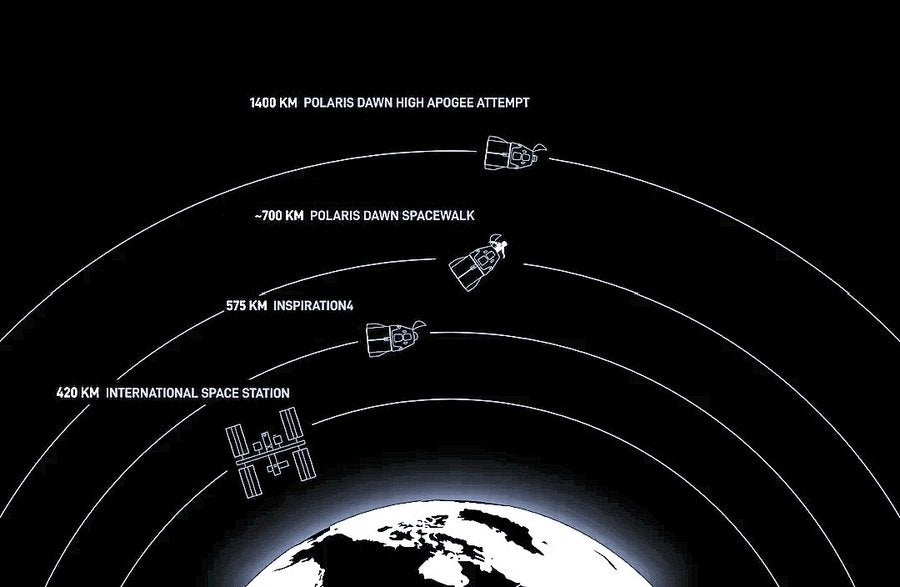
Early tomorrow morning, two members of the Polaris Dawn crew – billionaire Jared Isaacman and SpaceX employee Sarah Gillis – will attempt something no private civilians have ever tried before: a spacewalk.
There is a backup opportunity if required, allowing the pair to attempt the daring feat on Friday, 13 September, at the same time.
SpaceX on track for record-breaking year
Tuesday’s Polaris Dawn launch was SpaceX’s 90th orbital mission this year, just six shy of the record-breaking number the firm managed in 2023.
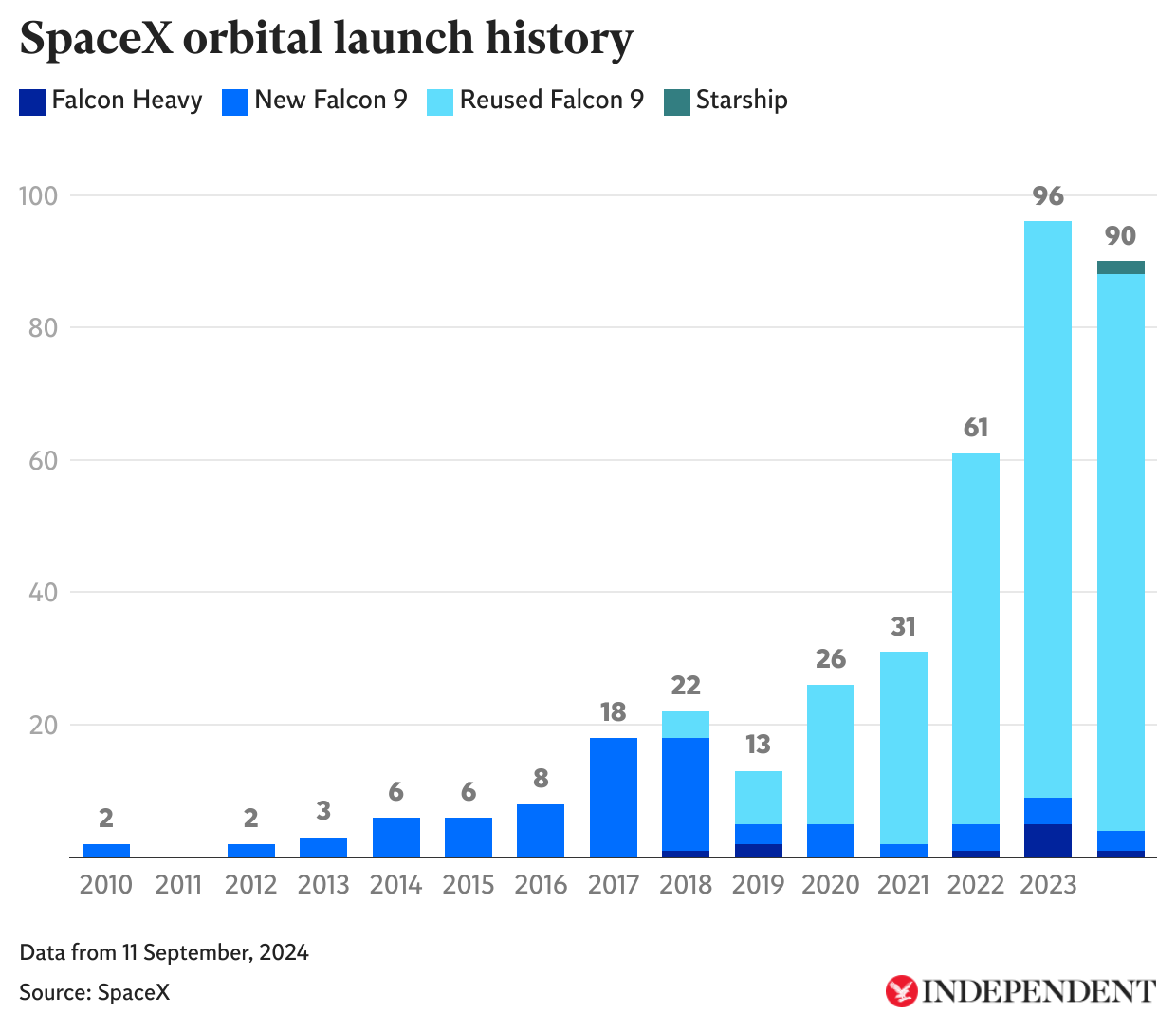
Elon Musk plans at least another dozen launches before the end of 2024, which is more than all of his rivals combined.
The world’s richest person also controls nearly two thirds of all active satellites through his Starlink internet network, turning himself into a space superpower.
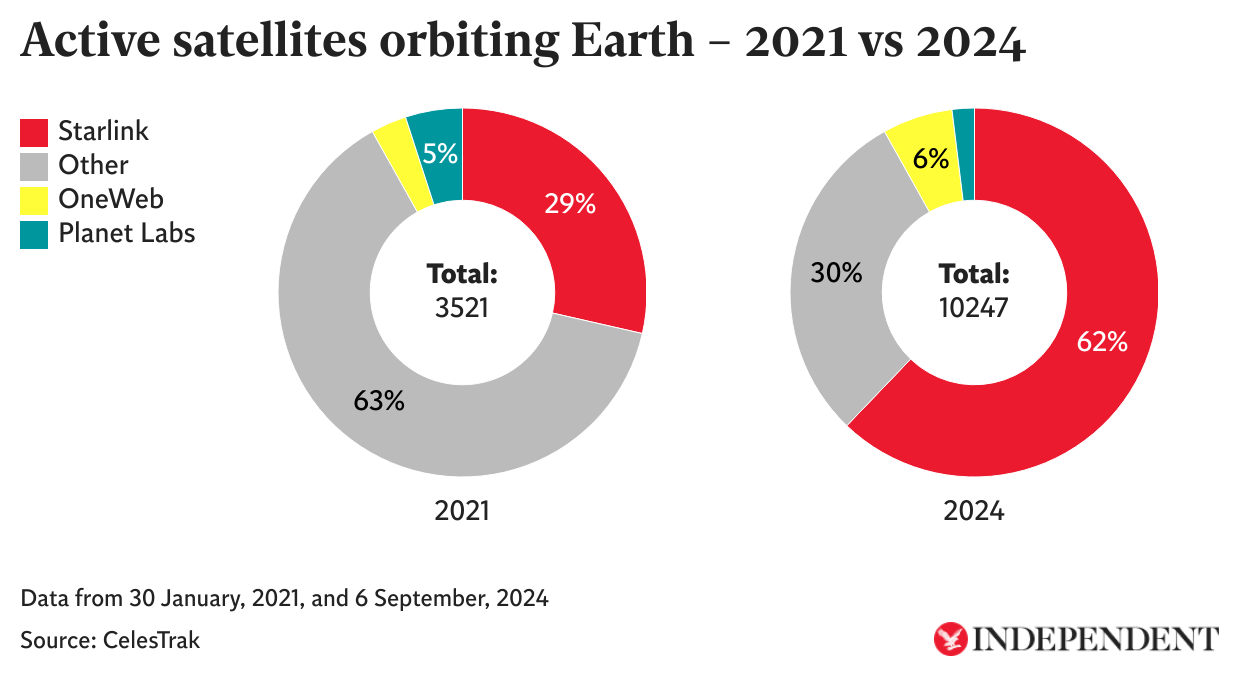
Last week, I spoke to advocacy groups and astronomers who warned that wielding such power could be a serious problem. You can read more about it here:

Elon Musk’s is monopolising space – this is why it’s causing alarm
The world’s richest person now controls two-thirds of all active satellites through his space internet network Starlink. Advocacy groups and astronomers tell Anthony Cuthbertson why wielding such power could be a serious problem
Why Polaris Dawn could finally make commercial space travel useful
A billionaire going on a privately-funded spacewalk is proving as polarising as it is pioneering.
The Polaris Dawn mission, conducted by SpaceX but paid for by US entrepreneur Jared Isaacman, is the latest in a series of commercial ventures that are opening up space to anyone rich enough to pay for it. Previous private space flights have been praised by some for heralding a new era of space access, while being ridiculed by others as the latest folly of self-indulgent billionaires.
But this mission is a giant leap from the vainglorious joyrides to the edge of space undertaken by Jeff Bezos and Richard Branson, who blew their billions on unconvincing attempts to call themselves astronauts. (Despite Blue Origin repeatedly referring to Bezos as an “international astronaut” during his 10-minute flight to the Kármán line in 2021, the trip did not meet the astronaut criteria set out by the US Federal Aviation Administration, which states that crew members must take part in activities that are “essential to public safety, or contributed to human space flight safety”.)

By contrast, Polaris Dawn will travel more than 10-times further than either Blue Origin or Virgin Galactic have ventured and will last for days, not minutes. More than just a nice view for the crew, SpaceX says the mission will provide “valuable insight to future missions on the road to making life multiplanetary”, alluding to Elon Musk’s ambition to colonise Mars.
You can read more about why this mission might actually matter here:

Why the world’s first civilian spacewalk may finally make private space travel useful
SpaceX’s latest commercial mission is proving to be as polarising as it is pioneering, writes Anthony Cuthbertson
Watch the Polaris Dawn crew lift off
In case you missed it, you can watch the moment the Polaris Dawn mission lifted off from Nasa‘s Kennedy Space Center in Florida on Tuesday:
We’ll have the live stream of the spacewalk at around 1:20am ET (6:20am BST), with the attempt taking place an hour later.
Polaris Dawn shares stunning images of orbital sunset
Ever wondered what a sunset looks like from 700 kilometres above Earth? Polaris Dawn has you covered:
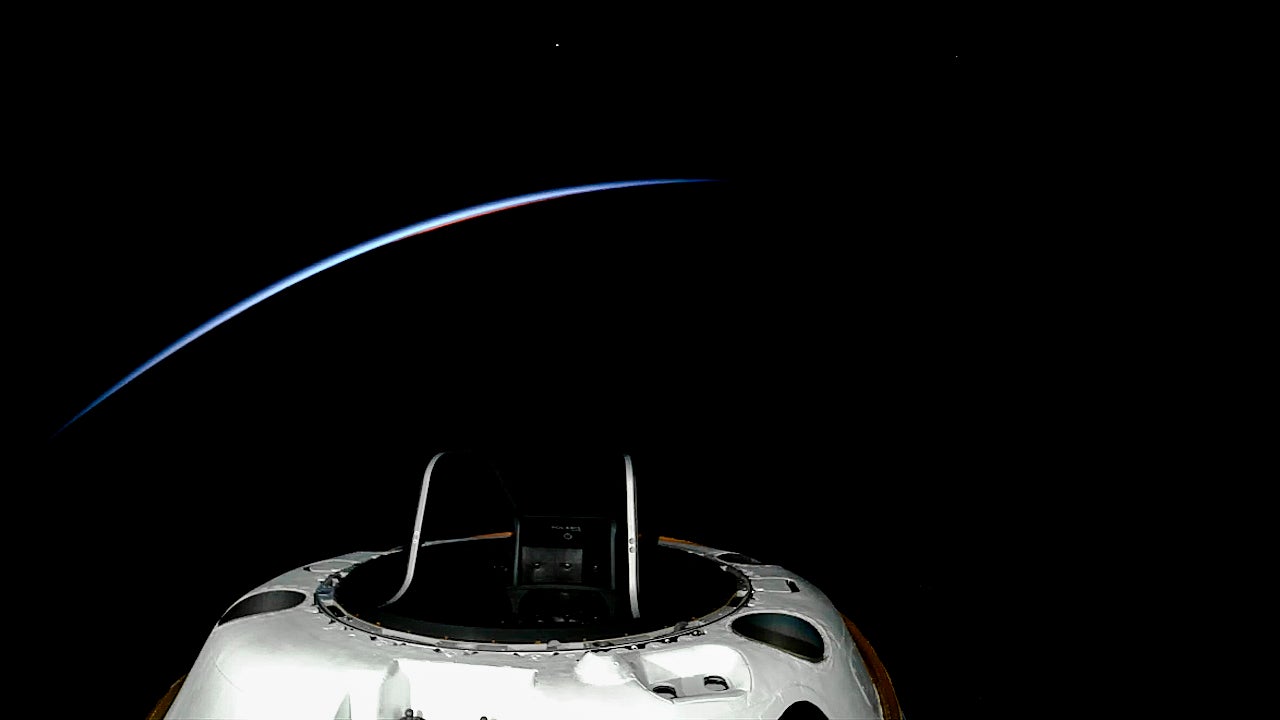
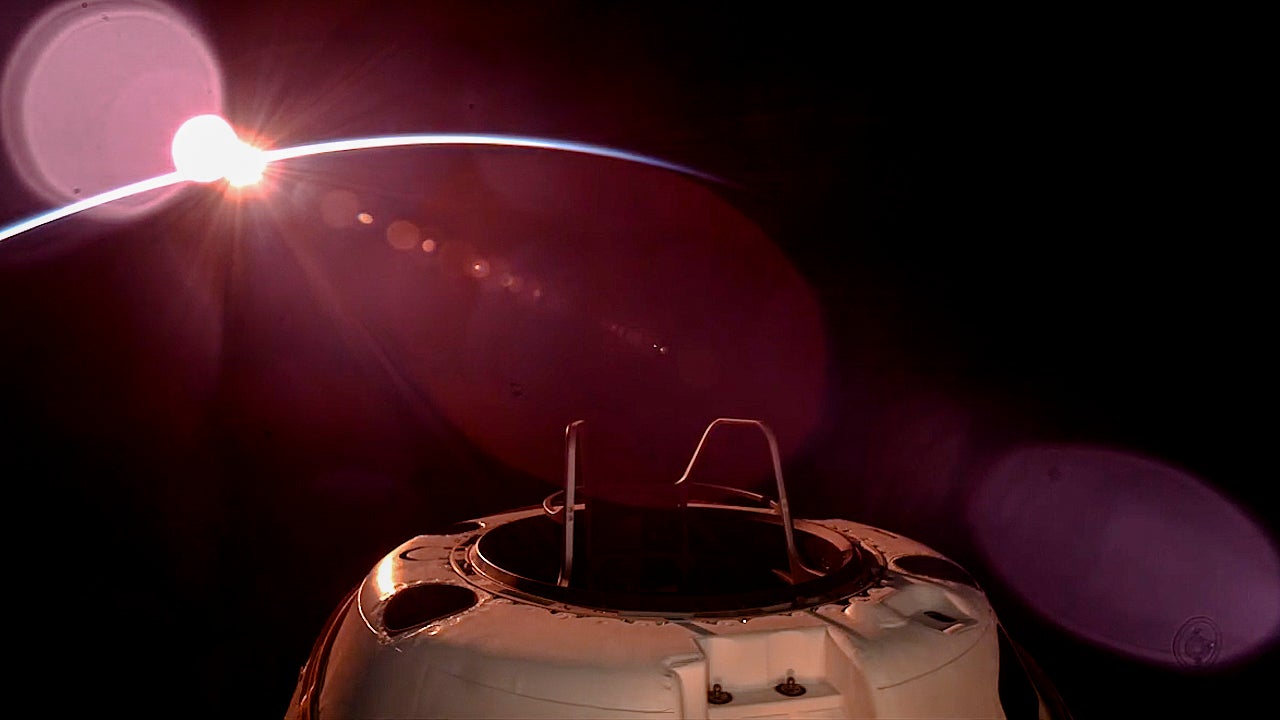
We’re less than an hour away from the spacewalk attempt, we’ll have the live stream to watch shortly.
Spacewalk delayed but SpaceX says ‘all systems looking good’
SpaceX has just issued a statement, saying today’s spacewalk attempt is on - but it’s been delayed.
The attempt has been pushed back by around three hours, while a backup opportunity still remains available tomorrow morning.
“All systems are looking good for the Polaris Dawn crew to perform the first spacewalk from Dragon today,” the company said, adding that the live stream will be starting at 4:55am ET (9:55am BST).

What the Polaris Dawn crew got up to on Day 2
As they prepare for the first ever civilian spacewalk – and the first spacewalk from a SpaceX Crew Dragon capsule – the Polaris Dawn team have shared details of what the crew got up to yesterday:
“The Polaris Dawn crew began Flight Day 2 with an incredible milestone – Dragon reached an apogee of more than 1,400 kilometers, marking the farthest humans have traveled in space since the completion of the Apollo program over 50 years ago. Mission Specialist Sarah Gillis and Mission Specialist and Medical Officer Anna Menon also became the first two women to have travelled this far in space! Mission Commander Jared Isaacman also passed the torch to the Nasa Artemis crew, saying he’s looking forward to their upcoming flight.
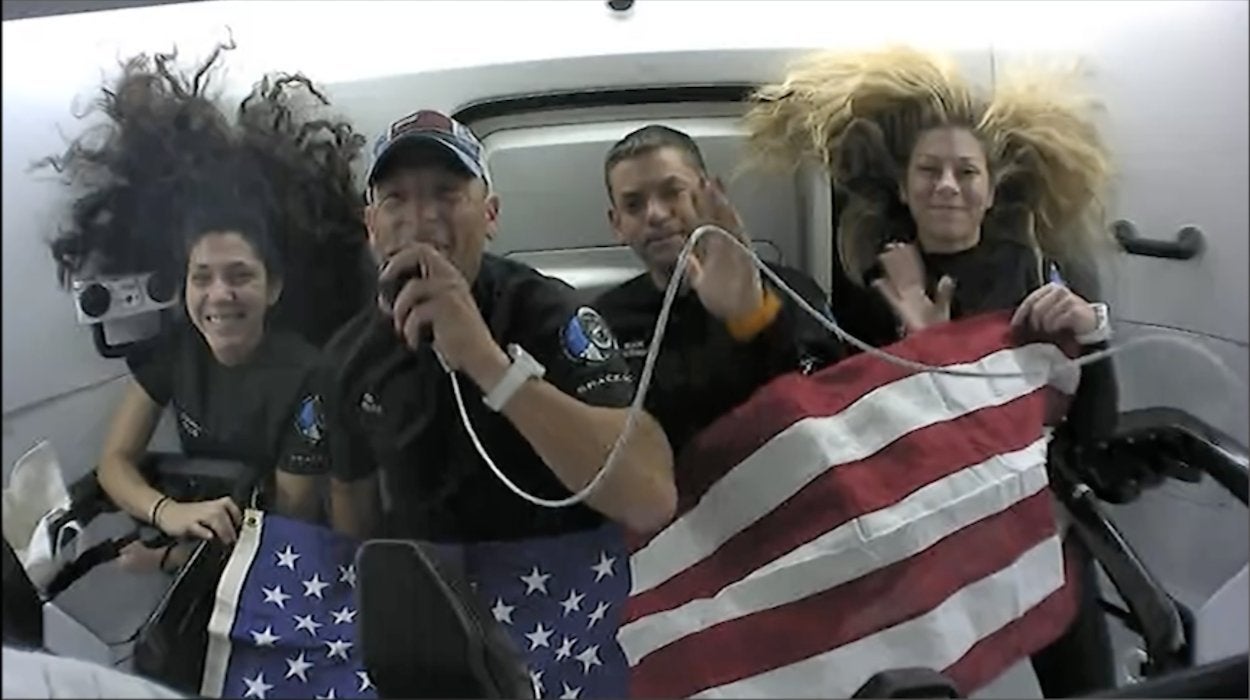
The update continued: “After completing six orbits of Earth at this altitude, Dragon performed a series of descent burns to reach an orbit of ~190 x 700 km for Thursday’s spacewalk while simultaneously continuing to safely lower its interior’s pressure, bringing the cabin environment closer to conditions required for the EVA. The crew also spent a few hours demonstrating the suit’s pressurized mobility, verifying positions and accessibility in microgravity along with preparing the cabin for the EVA.”
Ms Menon also spent some time reading her book ‘Kisses from space’ to a group of patients at St. Jude Children’s Research Hospital.

How to watch Polaris Dawn spacewalk
We’re less than three hours away from the Polaris Dawn spacewalk, with a live stream expected at 4:50am ET (9:50am BST).
You can watch it on SpaceX’s website here, as well as the firm’s official X page here. We’ll also have the live stream right here as soon as it’s available.
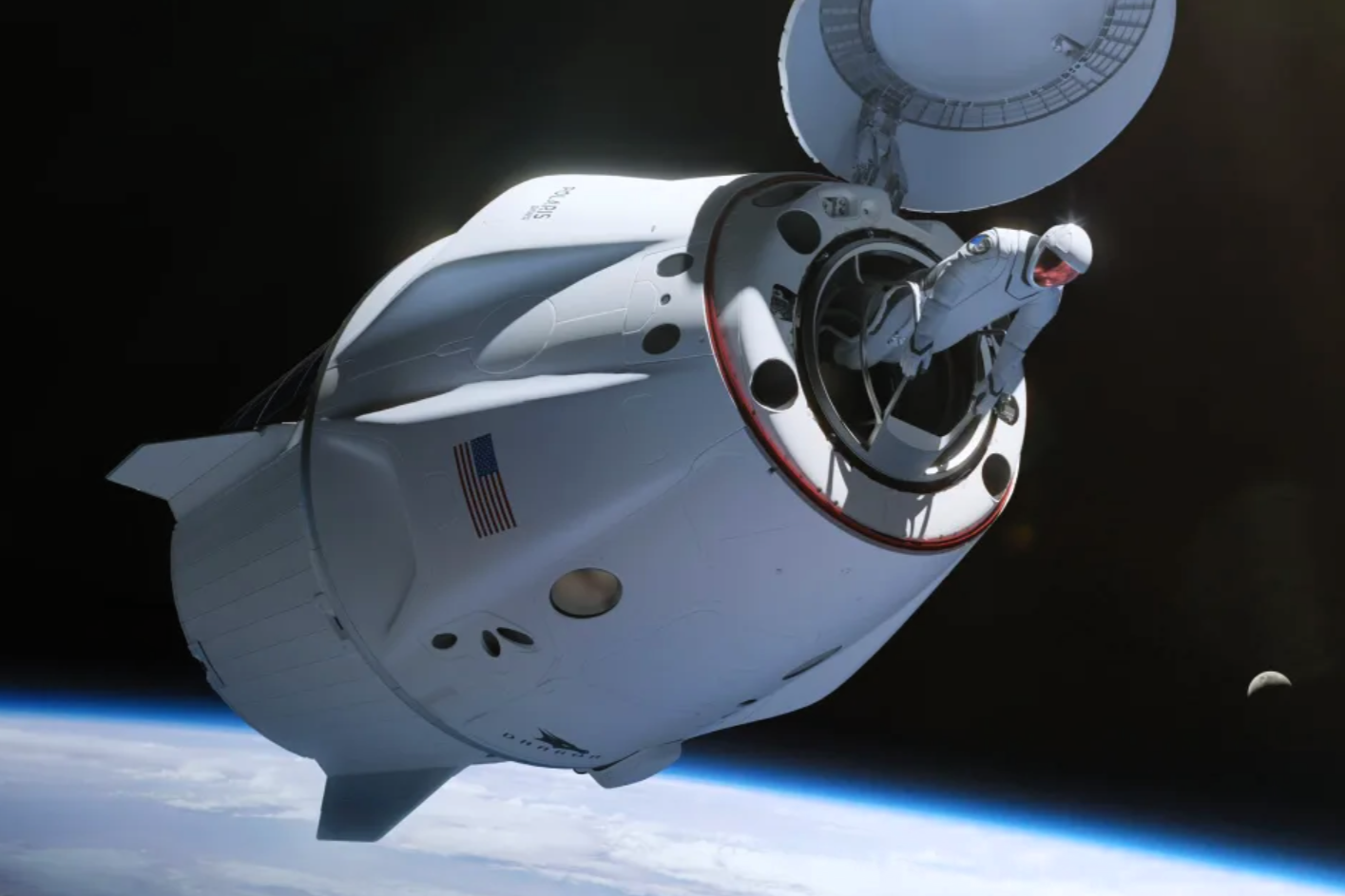
First ever test of SpaceX’s ‘suit of armour made of fabric'
Only two of the Polaris Dawn crew – mission commander Jared Isaacman and SpaceX employee Sarah Gillis – will actually take part in the spacewalk.
The other two – mission pilot Kidd Poteet and medical officer Anna Menon – will remain in the Crew Dragon spacecraft, which for this mission has been named Resilience.
Despite not actually leaving the craft, both Poteet and Menon will need to be fully suited up. This is because the Dragon capsule does not have an airlock, meaning the entire spacecraft will need to be depressurised.
It means that all four astronauts will be taking part in the primary objective of this spacewalk, which is to test SpaceX’s new extravehicular activity (EVA) spacesuits. These have been designed to take humans further than they’ve ever been before, with the hope of using them to take astronauts to the Moon, Mars and beyond.
The design is based on SpaceX’s tried and tested intravehicular activity (IVA) spacesuit, but comes with several upgrades to make it suitable for use in outer space. These include new joints to improve mobility and a visor with a heads-up display.
SpaceX principal spacesuit engineer Erik Kraus describes it as “a suit of armour made of fabric”.
Here’s a close-up of how they look:
Join our commenting forum
Join thought-provoking conversations, follow other Independent readers and see their replies
Comments